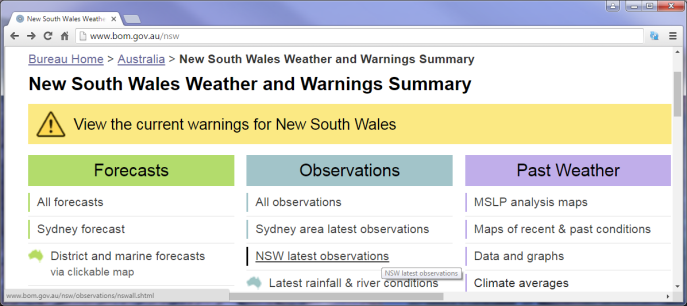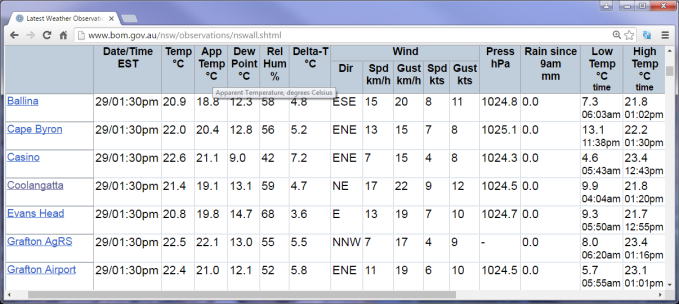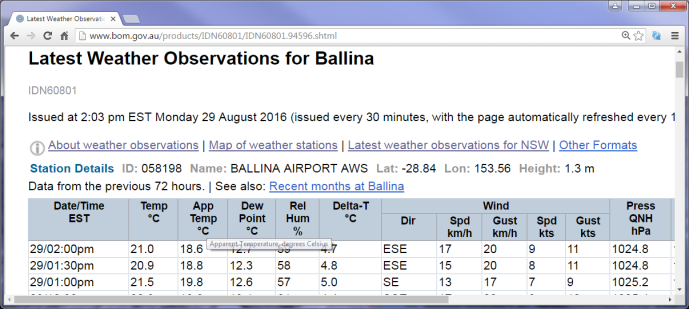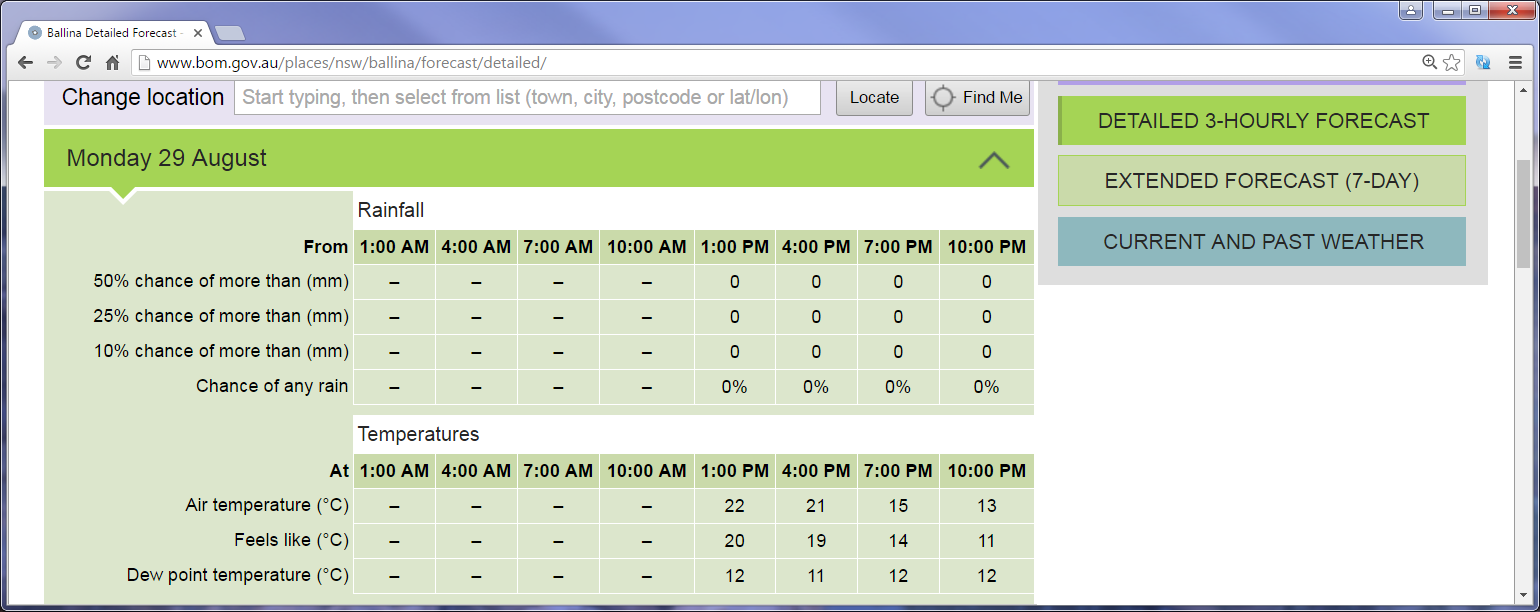Apparent ('feels like') temperature
19 October 2016
Have you ever looked at the recorded temperature for your area and thought ‘It felt colder than that’? You could be right. Our instruments measure ‘ambient temperature’—how warm the air is in the shade and sheltered from the wind. But by taking into account wind and humidity we also calculate ‘apparent temperature’—how warm you might feel. There can be a considerable difference between the two.
Wind chill
In the cooler months, particularly in alpine areas, the wind can make conditions feel much colder than the ambient temperature. You have a layer of warmer air around your body that can insulate you from cooler surrounding air; wind strips this layer away and allows you to feel more of the cold.
In alpine areas, the ambient temperature could be around –1 °C, for example, but the apparent temperature could be –15 °C. Even closer to sea level, you might be walking your dog on a 22 °C day, so you don’t take a jumper, but the wind chill makes it feel like 15 °C—quite uncomfortable.
Humidity
At higher temperatures, wind chill is less significant and humidity plays a greater role in how warm you feel. In the tropics, there have been examples where the air temperature is 29 °C but it feels like 38 °C!
When we are hot, our bodies sweat to cool us down. When there is a lot of moisture in the air, though, the rate at which sweat can evaporate from (and cool) the skin is reduced.
So if you are going to be working or playing outside and you know it’s hot, check the 'feels like' temperature and take measures to avoid heat stress.
Calculating the ‘feels like’ temperature
The Bureau measures ambient temperature—the actual temperature of the air—using thermometers sheltered from sun and wind.
We then estimate what temperature it feels like, using a mathematical model of an adult walking outdoors in the shade. The Steadman Apparent Temperature is defined as the temperature that (at a reference level of humidity and without wind) would produce the same level of discomfort in such an adult as the current combination of ambient temperature, humidity and wind chill.
The Steadman model does not include the effect of direct sunlight. If you’re out in the midday sun in Australia, that can increase the apparent temperature by about 8 °C. The Steadman model also assumes that the adult walking outside is ‘appropriately dressed’. If your clothing is wet, for example, wind chill can be more severe and your chance of hypothermia would be greater than indicated by the apparent temperature.
What’s the current ‘feels like’ temperature?
The Bureau website lists weather observations from stations around the country, including ambient and apparent temperature, relative humidity and wind speeds. To check the latest apparent temperature for a given location, open the page for your State/Territory and under ‘Observations’ click ‘latest observations’:


‘App Temp °C’ is the apparent temperature calculated for each location, in degrees Celsius. Click the name of your nearest weather station to see data from the previous 72 hours:

You can also see the latest apparent temperature for your area (labelled ‘Feels like’) on the BOM Weather app.
Viewing ‘feels like’ forecasts
The Bureau’s graphical forecast tool, MetEye, can generate maps of what the temperature is expected to feel like at the start of each three-hour period over the next seven days:

The ‘feels like’ (apparent) temperature forecast for each location is calculated using the forecast ambient temperature, humidity level and wind speed.
For a specific location, type the place name into the MetEye search box, click ‘Locate’ and ‘See text views for location’, then click ‘Detailed 3-hourly forecast’ to see forecast conditions including ‘Air temperature’ (ambient) and ‘Feels like’ (apparent) temperature for each three-hour period in the next seven days:

More information
Thermal stress: www.bom.gov.au/info/thermal_stress
BOM: Is it cold enough for a jacket? Here's why you should check the 'feels like' temperature (ABC)



Comment. Tell us what you think of this article.
Share. Tell others.